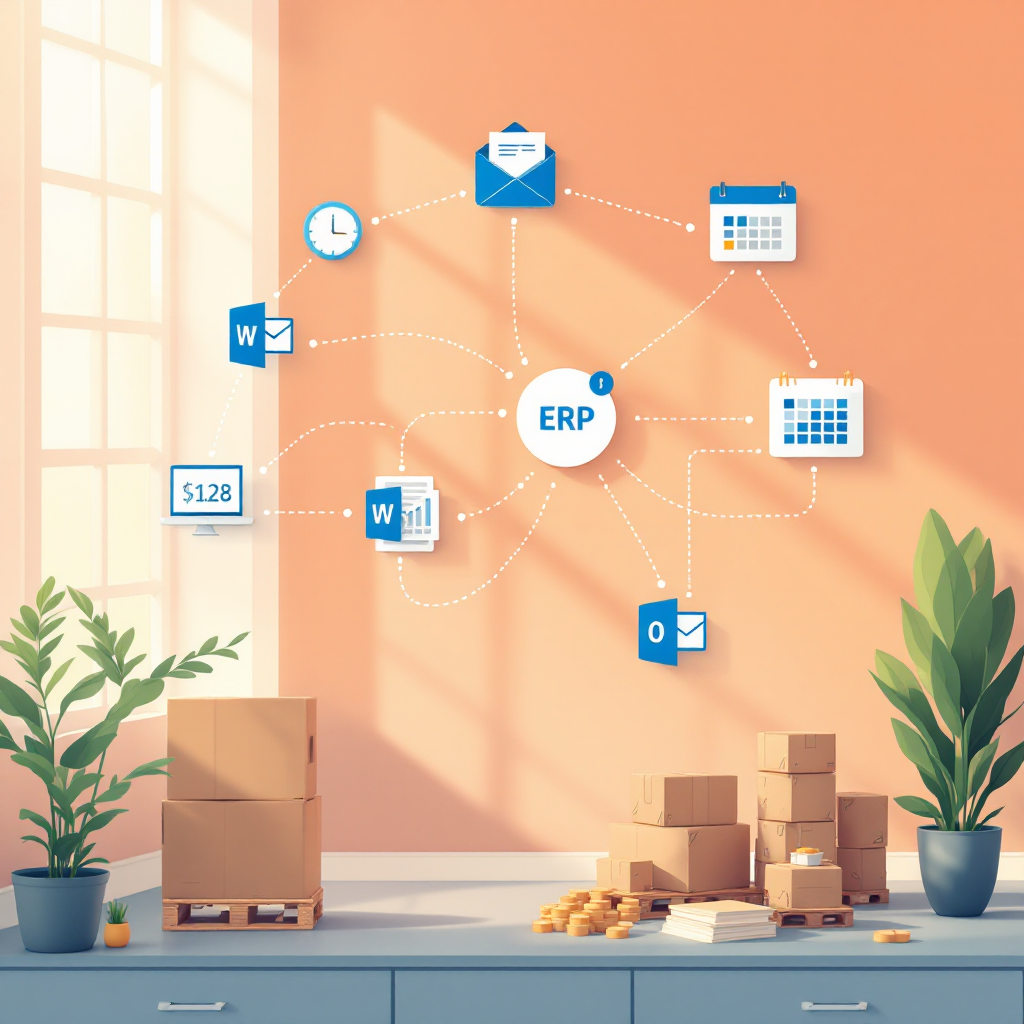AI (ai) in outlook: how an ai email assistant and ai email assistant for outlook can clean email and prioritise your inbox
AI now plays a central role in keeping busy INBOXes under control. First, it triages incoming EMAILS based on sender, topic, and urgency. Then, it summarizes long threads and surfaces priority messages. For example, AI can tag priority items, suggest replies, and archive low-value mail. These functions reduce repetitive EMAIL TASKS and speed response times. In practice, native tools and add-ins both offer thread SUMMARY and one-click actions. For example, Microsoft Copilot and MailMaestro both offer thread summarisation and one-click replies inside Outlook (source). These features matter when teams see 100+ incoming emails per day, or when shared mailboxes lose context.
AI triage works by classifying every EMAIL and then applying rules. The agent learns from user behavior. It highlights messages that need a human, and it defers routine queries. As a result, teams cut handling time dramatically. Our customers reduce average handling time from ~4.5 minutes to ~1.5 minutes per message by using grounded AI that reads ERP, SharePoint, and email history. This improvement means faster answers, fewer mistakes, and better customer service.
To measure impact, watch two quick metrics. First, track reduction in unread BACKLOG. Second, measure time-to-first-REPLY. Both fall quickly when AI sorts and surfaces urgent mail. Also, track the percentage of messages that the agent auto-suggests a READY TO SEND draft for. Start small, and expand rules as confidence grows. For teams that need logistics-focused drafts and data fusion, see our case studies on virtualworkforce.ai for how an AI agent links ERP and email memory to produce accurate replies (example). Finally, remember that long email threads lose context fast. Use thread summarisation to restore clarity and speed up decisions.
integration: microsoft 365 copilot, mailmaestro and add-in for outlook — enterprise-grade ai agents and ai tools
Integration determines how smoothly AI fits into your existing tools. Native options like Microsoft Copilot sit inside the platform and offer deep access to the OUTLOOK interface. By contrast, third-party add-ins such as MailMaestro deploy quickly and sit alongside your mailbox. Both paths have pros and cons. Native outlook integration tends to provide stronger compliance controls. Third-party add-ins often deliver faster feature testing and quick wins.
Security must guide your choice. Enterprise-grade solutions keep data inside corporate tenancy and support compliance controls. Verify admin deployment and DLP compatibility before rollout. Also confirm tenant consent, single sign-on, audit logging, and conditional access. A useful checklist for IT includes tenant consent, SSO, audit logging, and conditional access. These points protect sensitive attachments and personal data during AI processing. Microsoft itself notes a practical use case: “Sellers can request an agent to gather and summarize information from various data sources,” and that quote shows how agents synthesize data to help decision-making (Microsoft).
When you compare tools, consider the following. Evaluate how the solution integrates with Microsoft 365 and native services. Check if it integrates with SharePoint, OneDrive, CRM systems, and ERP. Also assess whether it honors retention and data residency policies. For rapid pilots, add-in for outlook options such as MailMaestro and other ChatGPT-powered add-ins can deliver fast adoption. However, confirm that add-ins follow enterprise controls. If your team needs logistics-specific drafting and system updates, consider platforms that fuse ERP/TMS/WMS data with email context, such as virtualworkforce.ai, to keep replies grounded and auditable (learn more).

Drowning in emails? Here’s your way out
Save hours every day as AI Agents draft emails directly in Outlook or Gmail, giving your team more time to focus on high-value work.
Automate: using automation and automate to build workflow and workflows across outlook email for better productivity
Automation changes how teams handle repetitive EMAIL TASKS. Start by mapping common patterns. Typical automations include scheduled followups, auto-categorisation, extracting meeting details to calendar, and generating rules from recurring patterns. You can also automate notification workflows and escalate overdue items. These routines reduce manual steps. They also lower the chance of human error when teams must copy data across systems.
AI enhances automation by reading message content and deciding the right action. For example, an AI model can parse an order update and then update your ERP, or it can surface documents from SharePoint to support a reply. This reduces copy‑paste work and speeds replies. In marketing contexts, AI personalisation can increase click-through rates by up to 30% (source). In service contexts, automation frees people to focus on complex problems. Start with simple rules, measure impact, then expand to workflows across apps. For logistics teams, automating common correspondence cuts repetitive work and improves consistency; see how automated logistics correspondence can scale responses securely (case study).
Implementation tip: pilot a small set of automations with a control group. Track inbox size, response times, and user satisfaction. Next, add cross-application workflows that update CRM or ERP systems after an email triggers an action. Also, train users on prompts and simple automation rules. Keep humans in the loop for sensitive replies. Finally, iterate. Measure, then tune. This approach helps teams move from reactive email triage to proactive task management and better overall productivity.
Reply and email history: using reply templates, saved email history and an ai assistant / copilot to keep tone consistent and actionable
Reply quality affects customer satisfaction and internal efficiency. Use saved reply templates to keep tone consistent. An AI assistant can draft replies and adapt tone to audience needs. It can also surface related EMAIL HISTORY and documents from OneDrive or SharePoint so every answer stays grounded. For instance, Copilot can draft followups from thread context and include relevant attachments. Keep editable drafts so humans retain oversight and control.
Thread awareness matters. Long email threads hide critical facts. Use thread SUMMARY and document surfacing to avoid redundant questions. Our platform embeds email memory and connects to ERP, TMS, and WMS to fetch facts while drafting replies. This saves lookup time and reduces errors. Teams that route order queries through a data‑aware assistant see fewer escalations and a higher first-contact resolution rate. Also, keeping a clear audit trail helps with compliance. Log generated replies, record what data the model cited, and maintain email history for audits.
Practical steps include creating templates, defining tone presets, and teaching people how to prompt the agent. Use prompts that ask the AI to write brief customer-friendly replies, to propose followup tasks, and to highlight open items. For teams in logistics, integrating an AI writing assistant into common workflows speeds the drafting of order confirmations, ETAs, and exception handling. If you need examples or product‑fit advice, our virtual assistant for logistics page shows how AI drafts accurate replies while linking back to ERP and shipping data (details).
Drowning in emails? Here’s your way out
Save hours every day as AI Agents draft emails directly in Outlook or Gmail, giving your team more time to focus on high-value work.
best outlook, best ai and best ai email assistant: choosing the right add-in for outlook and powerful ai for enterprise needs
Choosing the right tool requires a clear checklist. First, evaluate the depth of OUTLOOK INTEGRATION. Does the add-in appear in the inbox, the reading pane, or a sidebar? Second, review the security posture. Confirm role-based access, tenant isolation, and audit logs. Third, check admin controls and scalability. Finally, estimate measurable ROI before full deployment.
Vendors differ. Microsoft Copilot offers deep native outlook benefits and access to Microsoft 365 contexts. MailMaestro and other ChatGPT-based add-ins deliver rapid deployment and user-facing features. If you want the best ai email assistant for enterprise use, choose a solution that supports data grounding, auditability, and business rules. BitMart Research Institute observed that “AI Agent is moving from tool to collaborator,” which shows the shift toward assistants that work alongside humans (source).
Run a pilot with power users. Measure time saved per user, reduction in unread inbox volume, and improvement in response times. For operations teams, factor in the ability to connect ERP and TMS. Virtualworkforce.ai specialises in no-code connectors that let ops teams configure behavior without heavy IT work. That approach often reduces handling time and improves accuracy. Also, check Microsoft AppSource for certified add-ins and verify enterprise-grade compliance settings before wider rollout (read more).

mailmaestro, chatgpt and ai agents in practice: deployment steps, measurable outcomes and how to keep a clean email inbox
Practical deployment follows a clear path. First, evaluate use cases and map common email scenarios. Next, run a compliance review. Then, pilot in a controlled group and capture metrics. Finally, scale with admin templates and governance policies. These steps ensure the solution fits existing workflows and respects retention rules.
Measure outcomes before and after deployment. Key metrics include inbox size, response times, number of automated follow-ups, user satisfaction, and risk incidents. For example, teams using AI to triage and reply often report a large drop in unread backlog and faster time-to-first-response. Also, research shows that many users check email frequently; 88% of people check daily and 39% check three or more times per day (Forbes). With high engagement, AI that improves prioritisation delivers clear benefits.
Governance matters in practice. Train users on prompts and safe patterns. Keep human review on sensitive replies. Monitor performance and tune rules. For logistics teams, ground every reply in ERP data, and log system updates. Our no-code approach lets business users control templates, escalation paths, and redaction rules. Teams then keep their INBOX clean while preserving audit trails. If you want implementation guidance for scale, see our how-to guide on scaling operations with AI agents (implementation). Finally, remember to iterate: test, measure, and improve.
FAQ
What is an AI email assistant for Outlook and how does it help?
An AI email assistant for Outlook reads messages, prioritises them, and suggests replies. It also summarises long threads and pulls related documents to speed drafting and reduce errors.
How do Microsoft Copilot and MailMaestro differ?
Microsoft Copilot offers native outlook capabilities with deep Microsoft 365 integration. MailMaestro and similar add-ins deliver rapid deployment and flexible UX options, but they require careful compliance checks.
Can AI agents reduce inbox size and response time?
Yes. AI agents can triage, archive low-value mail, and draft replies, which reduces unread backlog. Teams often measure faster time-to-first-response and fewer follow-ups after deployment.
Are there security risks when using AI in Outlook?
There are risks if tools lack tenant isolation or audit logging. Choose enterprise-grade solutions that support data residency, DLP, and conditional access to manage those risks.
How should IT prepare for deploying AI add-ins?
IT should verify tenant consent, single sign-on, audit logging, and conditional access. It should also conduct a compliance review and prepare deployment templates for users.
What automations work best across Outlook email?
Scheduled follow-ups, auto-categorisation, meeting extraction to calendar, and rule generation from common patterns work well. Start small, measure impact, and expand to cross-app workflows.
How do AI summaries help with long email threads?
Summaries condense key points and action items, restoring context in long email threads. That helps staff avoid repetitive questions and speeds decision-making.
Can AI adapt tone and style for replies?
Yes. AI writing assistance can adjust tone for different audiences and keep messages consistent. Always keep editable drafts so humans can review and approve before sending.
What metrics should organisations track after rollout?
Track inbox size, time-to-first-response, number of automated follow-ups, user satisfaction, and any risk incidents. These metrics show productivity and compliance impact.
How do I choose the best AI email assistant for my enterprise?
Evaluate depth of outlook integration, security posture, admin controls, scalability, and measurable ROI. Pilot with power users and confirm the tool meets your data and compliance policies.
Ready to revolutionize your workplace?
Achieve more with your existing team with Virtual Workforce.